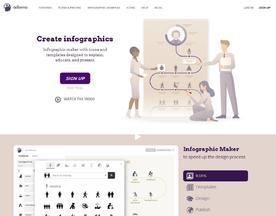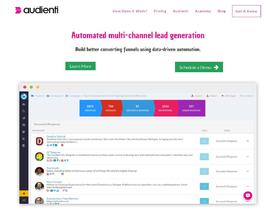What is a subheading? A subheading is a secondary title that divides content into sections, making it easier to read and navigate.
Subheadings are an essential part of any written content, whether it’s a research paper, a news article, or a blog post. They are used to break up the text into smaller, more manageable sections, making it easier for the reader to follow along and understand the content. A subheading is a secondary heading that appears below the main heading, and it provides additional information about the topic being discussed.

Understanding what is a subheading, is crucial for anyone who writes or reads content online. They help to organize information and make it more accessible to the reader. Subheadings also play a critical role in search engine optimization (SEO) by providing search engines with additional information about the content on the page. This can help to improve the page’s ranking in search results, making it more visible to potential readers.
Creating effective subheadings requires careful thought and consideration. The subheading should be relevant to the content that follows, and it should provide a clear and concise summary of what the reader can expect to learn. Additionally, the subheading should be formatted in a way that is easy to read and visually appealing. By following these guidelines, writers can create subheadings that enhance the overall structure and readability of their content.
Key Takeaways
- Subheadings are secondary headings that appear below the main heading and provide additional information about the topic being discussed.
- Subheadings are essential for organizing information and making it more accessible to readers, as well as improving search engine optimization.
- Effective subheadings should be relevant, clear, concise, and visually appealing.
What is a Subheading
Definition and Purpose
Subheadings are secondary headings that are used to break down a piece of content into smaller, more manageable sections. They are typically found below the main heading and are used to provide additional information about the content that follows. Subheadings are also used to help guide the reader through the content and to make it easier to navigate.
The purpose of subheadings is to provide structure and hierarchy to the content. They help to organize the information and make it more digestible for the reader. Subheadings can also be used to highlight key points or to introduce new topics within the content.
Importance in Text Hierarchy
Subheadings play an important role in the hierarchy of a piece of content. They help to break up the text and make it easier to read, which can improve the overall user experience. Subheadings also help to establish the main points of the content and to provide a roadmap for the reader.
In terms of hierarchy, subheadings are typically used to support the main heading and to provide additional context for the content. They are usually formatted differently from the main heading, such as being smaller in size or using a different font. This helps to differentiate the subheading from the main heading and to make it clear that it is a secondary heading.
According to Grammarly, subheadings can also improve the SEO of a piece of content by making it easier for search engines to understand the structure of the content. This can lead to higher rankings in search results and increased visibility for the content.
Overall, subheadings are an important tool for writers and content creators. They help to organize the content and make it more accessible for the reader, while also improving the overall quality of the content.
Creating Effective Subheadings
Subheadings are a crucial element of any well-structured article. They serve as a roadmap that guides the reader through the content and helps break up large blocks of text into smaller, more manageable sections. In this section, we will explore the characteristics of good subheadings and provide tips for writing effective ones.
Characteristics of Good Subheadings
Good subheadings have several key characteristics that set them apart from ineffective ones. First and foremost, they should be clear and concise. A subheading that is too long or convoluted can confuse the reader and detract from the overall readability of the article. Additionally, subheadings should be written in title case and should accurately reflect the content that follows.
Another important characteristic of good subheadings is that they should be unique. Each subheading should provide information that is distinct from the other headings in the article. This helps keep the content organized and makes it easier for the reader to follow along.
Consistency is also essential when it comes to subheadings. All headings should be written in the same format, and the same style should be used throughout the article. This helps create a sense of cohesion and makes the content more visually appealing.
Tips for Writing Subheadings
Writing effective subheadings can be challenging, but there are several tips that can help. First and foremost, it’s important to create a list of the main points that will be covered in the article. This will help guide the creation of subheadings that accurately reflect the content that follows.
Another useful tip is to use a formula when creating subheadings. For example, a common formula is to use a mini-headline that includes a keyword or phrase that summarizes the content that follows. This helps make the subheading more compelling and useful to the reader.
Context is also important when it comes to subheadings. Each subheading should provide enough context to help the reader understand what will be covered in the following section. This can be achieved by using descriptive language and including relevant information.
Finally, it’s important to inject some personality into subheadings. While they should be clear and concise, they can also be creative and engaging. This helps capture the reader’s attention and makes the content more enjoyable to read.
For more information on creating effective subheadings, check out this resource, which provides additional tips and examples.
Formatting and Style
Subheadings are an essential part of any well-written document, and formatting and style are crucial to their effectiveness. Proper use of font and text features, consistency in formatting, and the use of keywords and phrases are all important considerations when creating subheadings.
Font and Text Features
Font and text features can be used to make subheadings stand out and draw attention to important information. Bold and italicized text, different font sizes and styles, and colored text are all options for creating visually appealing subheadings. However, it is important to use these features sparingly and consistently to avoid overwhelming the reader.
Consistency in Formatting
Consistency in formatting is crucial when creating subheadings. Using the same font, text features, and heading levels throughout the document helps to create a cohesive and professional appearance. This consistency also makes it easier for the reader to navigate the document and find important information.
Using Keywords and Phrases
Using keywords and phrases in subheadings is an effective way to improve search engine optimization (SEO) and make the document easier to find online. Including relevant keywords in subheadings can help search engines understand the content of the document and rank it higher in search results. However, it is important to use keywords and phrases naturally and avoid overusing them.
When creating subheadings, it is important to follow proper formatting guidelines. The American Psychological Association (APA) has specific guidelines for formatting headings, including the use of parallel structure and specific heading levels. Following these guidelines can help to create a professional and well-organized document.
Overall, subheadings are an important part of any document, and proper formatting and style can make them more effective. By using font and text features, maintaining consistency in formatting, and including relevant keywords and phrases, subheadings can improve the readability and SEO of a document.
For more information on creating effective subheadings, check out this resource.
Subheadings in Digital Content

Subheadings are an essential part of digital content, used to break up text and make it easier to read. They are usually formatted as H2 or H3 headings in HTML and can help improve the readability and organization of a blog post or website.
SEO and Subheadings
Subheadings also play an important role in search engine optimization (SEO). Search engines like Google use algorithms to analyze website content and determine its relevance to specific search queries. By using subheadings, website owners can make it easier for search engines to understand the structure and content of their site, which can help boost their SEO.
According to Moz, a leading authority on SEO, using subheadings can also help improve the user experience of a website. By breaking up text into smaller, more manageable chunks, subheadings can make it easier for visitors to find the information they are looking for and navigate a site more efficiently.
Navigation and User Experience
In addition to boosting SEO, subheadings can also have a positive impact on website navigation and user experience. By using descriptive and informative subheadings, website owners can help visitors quickly find the information they need and understand the structure of a page or blog post.
WordPress, a popular content management system, makes it easy to add subheadings to blog posts and pages. Users can simply highlight the text they want to turn into a subheading and select the appropriate heading style from the drop-down menu.
Overall, subheadings are an important tool for optimizing digital content for both search engines and human visitors. By using descriptive and informative subheadings, website owners can improve the readability, organization, and overall effectiveness of their content.
Incorporating Additional Elements

Subheadings are an essential tool for organizing and breaking up large blocks of text. However, incorporating additional elements such as images, links, and calls to action can enhance the effectiveness of subheadings even further.
Images and Visual Aids
Including images and other visual aids can make subheadings more engaging and help to break up large blocks of text. Images can also be used to illustrate key points and concepts, making them easier to understand. For example, a subheading about the benefits of exercise could be accompanied by an image of someone jogging or lifting weights.
Links and Calls to Action
Links and calls to action (CTAs) can also be incorporated into subheadings to encourage readers to take action or explore further. For example, a subheading about a new product could include a CTA to “Learn More” or “Buy Now.” Additionally, including links to external resources with high authority on the topic can add credibility to the information presented.
When incorporating additional elements into subheadings, it is important to ensure they are relevant and enhance the overall message. Overuse of these elements can be distracting and reduce the effectiveness of the subheading. By carefully selecting and incorporating these elements, subheadings can become even more powerful tools for organizing and presenting information.
Examples and Best Practices

Analyzing Effective Subheadings
Subheadings are an essential part of any well-structured content. They provide context, break up large blocks of text, and help readers navigate through the content more efficiently. Effective subheadings can significantly improve the reading experience and make the content more accessible to a broader audience.
One of the best practices for creating effective subheadings is to make them descriptive and informative. A subheading should be a brief summary of the content that follows and should give the reader an idea of what to expect in the upcoming section. It should also be relevant to the main headline and the overall context of the article.
Another important aspect of creating effective subheadings is to use formatting to make them stand out. Bold, italic, or underlined text can make the subheading more noticeable and help it catch the reader’s eye. However, it’s essential to use formatting sparingly and consistently throughout the article to avoid confusing the reader.
Common Mistakes to Avoid
While subheadings can be a powerful tool for improving the reading experience, there are some common mistakes that writers should avoid. One of the most significant mistakes is using subheadings that are too vague or generic. A subheading should provide specific information about the content that follows and not just restate the main headline.
Another mistake is using subheadings that are too long or complicated. Subheadings should be short and to the point, and they should not require the reader to spend too much time deciphering their meaning. It’s also essential to avoid using subheadings that are too similar to each other, as this can make the content feel repetitive and tedious to read.
In summary, effective subheadings are an essential part of any well-structured content. They provide context, break up large blocks of text, and help readers navigate through the content more efficiently. By following best practices and avoiding common mistakes, writers can create subheadings that improve the reading experience and make the content more accessible to a broader audience.
For more information on subheadings and their benefits, check out this guide from Grammarly, a reputable source on writing and grammar.
Frequently Asked Questions

How do you effectively use subheadings in writing?
Subheadings are useful tools for breaking up long pieces of text into smaller, more manageable sections. To use subheadings effectively, it is important to ensure that they accurately reflect the content of the section they precede. Additionally, subheadings should be concise and to the point, and should be formatted consistently throughout the document.
What distinguishes a heading from a subheading?
Headings and subheadings serve similar purposes in organizing written content, but they differ in their level of specificity. Headings are typically used to introduce major sections of a document, while subheadings are used to break down those sections into smaller, more focused pieces of information.
Can a subheading be a full sentence, and how should it be formatted?
Subheadings can be full sentences, but they are typically shorter phrases that convey the main point of the section they precede. Subheadings should be formatted consistently throughout the document, using the same font, size, and style as other headings and subheadings.
What role do subheadings play in structuring research papers?
In research papers, subheadings are particularly important for organizing complex information and helping readers to navigate the document more easily. Subheadings can be used to break down a research paper into sections that address specific aspects of the topic being discussed.
In what ways do subheadings enhance readability and organization of a document?
Subheadings can enhance readability and organization of a document by breaking up long sections of text into smaller, more manageable chunks. They can also help to guide the reader through the content of the document, allowing them to quickly locate the information they are looking for.
How should subheadings be integrated into the flow of a paper’s content?
Subheadings should be integrated into the flow of a paper’s content in a way that makes sense and reflects the structure of the document. They should be used to break up long sections of text and to introduce new topics or ideas. When used effectively, subheadings can help to create a clear and logical flow of information throughout the document.
For more information on using subheadings effectively in writing, see this guide from the University of North Carolina at Chapel Hill.















